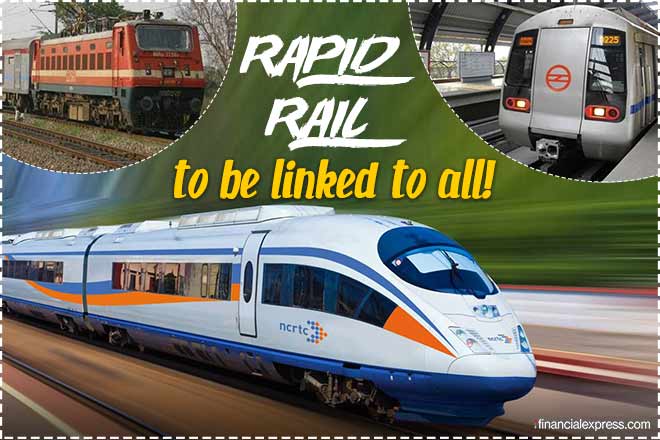Delhi-Meerut RRTS: India’s first rapid rail corridor between Delhi and Meerut will not just reduce the travel time between the two cities to just 55 minutes, but will also bring a transformation in integrating different modes of public transport. Once constructed, the Anand Vihar station of the regional rapid transit system (RRTS) will have seamless connectivity with two Delhi Metro corridors, inter-state bus terminals (ISBT) and the Indian Railways station. The Anand Vihar area is already a major transport hub of the national capital as the Anand Vihar railway station, Anand Vihar ISBT and two Delhi Metro corridors are situated with close proximity to each other.
According to the National Capital Region Transport Corporation (NCRTC), which is the implementing agency of the RRTS project, the integration with these different modes of transport will be done through lifts, walkways, escalators, foot over bridges (FOBs) as well as underpasses. The integration is a key aspect of the RRTS project, in order to provide a better travel experience to passengers.
Delhi-Meerut RRTS: Stations, map & key facts
- The 82-km long Delhi-Meerut RRTS corridor will comprise 22 RRTS stations, out of which only 4 stations will be built underground. The Anand Vihar RRTS station will be the only station which will be underground in the Delhi stretch of the RRTS corridor.
- Once operational, the Anand Vihar RRTS station, will be seamlessly connected with the Anand Vihar railway station, Delhi Metro’s Blue and Pink Line stations as well as with the ISBTs at Anand Vihar and Kaushambi.
- The station design of Anand Vihar RRTS is aimed at allowing safe and hassle-free movement of passengers from Anand Vihar RRTS station to other public transport modes and vice-versa.
- The design is being kept commuter-centric, as it will significantly reduce the construction cost of the station. It will allow commuters to avoid having to step on the roads while moving from one mode of transport to another.
- NCRTC has also floated a tender for the excavation and design of the underground passages by tunnel boring machines in the Delhi segment of the RRTS line.
- The Sarai Kale Khan station of the corridor will come up as a multi-modal transit hub, which will also have integration with other modes of public transport. It is the terminal station of the RRTS corridor.


